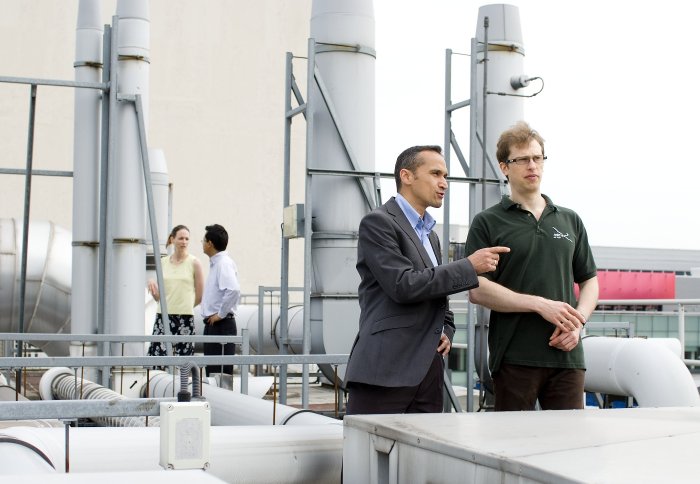

Chemical Engineering researchers have developed a model that can help determine the best strategy for satisfying energy demands through biomass.
A team from the Centre for Process Systems Engineering (Dr Nouri Samsatli, Dr Sheila Samsatli and Professor Nilay Shah) have developed a sophisticated and detailed bioenergy model, the BVCM (Biomass Value Chain Model), for the Energy Technologies Institute (ETI). This model is being used by the ETI to help drive the successful implementation of bioenergy (energy derived from biological material such as crops) in the UK sector.
The mathematical formulation of the BVCM was recently published in the journal Applied Energy. The paper describes how the model takes into account the potential yields of different crops, the performance of various biomass-to-energy technologies, transport networks and storage, in order to optimise the deployment of bioenergy under different scenarios, up to the 2050’s.
 Some example outputs of the model (click to enlarge). The optimal areas allocated to crop production are shown on the left and the location and size of the technologies are shown on the right. Other outputs include transport networks, utilisation of wastes such as municipal and industrial wastes, imports and storage.
Some example outputs of the model (click to enlarge). The optimal areas allocated to crop production are shown on the left and the location and size of the technologies are shown on the right. Other outputs include transport networks, utilisation of wastes such as municipal and industrial wastes, imports and storage.
Dr Sheila Samsatli, the corresponding author on the paper said, “Bioenergy is expected to play a role in the future energy mix, so it is important to have a good understanding of the end-to-end elements across the bioenergy value chain: from crops and land use, conversion of biomass to useful energy vectors and the manner in which it is integrated into the rest of the UK energy system (e.g. into transport, heat or electricity) and also the environmental and social impacts.”
Dr Nouri Samsatli, a co-author on the paper said, “The model we developed optimises the location of bioenergy crops and processing plants, at a 50 km resolution, to convert the biomass to intermediates and final energy vectors along with the associated logistical networks. It considers the future bioenergy system up to the 2050’s, given targets on energy provision and GHG emissions. It considers food crops, energy crops (such as Miscanthus and short rotation coppice-willow) and forestry, and contains a comprehensive database of technologies. It is the first optimisation tool that models the whole of the UK with this level of detail.”
The researchers are now applying a similar methodology to model whole energy systems, including wind power and hydrogen/electricity/gas networks.
The ETI has produced several publications, focusing on insights gained from the model, including a video, infographic and an insight report.
This project was commissioned and funded by the ETI, which is a public-private partnership between global energy and engineering companies and the UK Government. The project was delivered by a consortium led by E4tech, including Imperial Consultants, Rothamsted Research, University of Southampton, Forest Research, Black and Veatch, EDF-EIFER and Agra CEAS. The Imperial College team developed the mathematical formulation and implemented the model in AIMMS and the partners provided the data (yield data were derived from models of the crops and forestry, using climate and soil data).
Reference:
Article text (excluding photos or graphics) available under an Attribution-NonCommercial-ShareAlike Creative Commons license.
Photos and graphics subject to third party copyright used with permission or © Imperial College London.
Reporter
Michael Panagopulos
Department of Chemical Engineering

Contact details
Email: press.office@imperial.ac.uk
Show all stories by this author





Leave a comment
Your comment may be published, displaying your name as you provide it, unless you request otherwise. Your contact details will never be published.